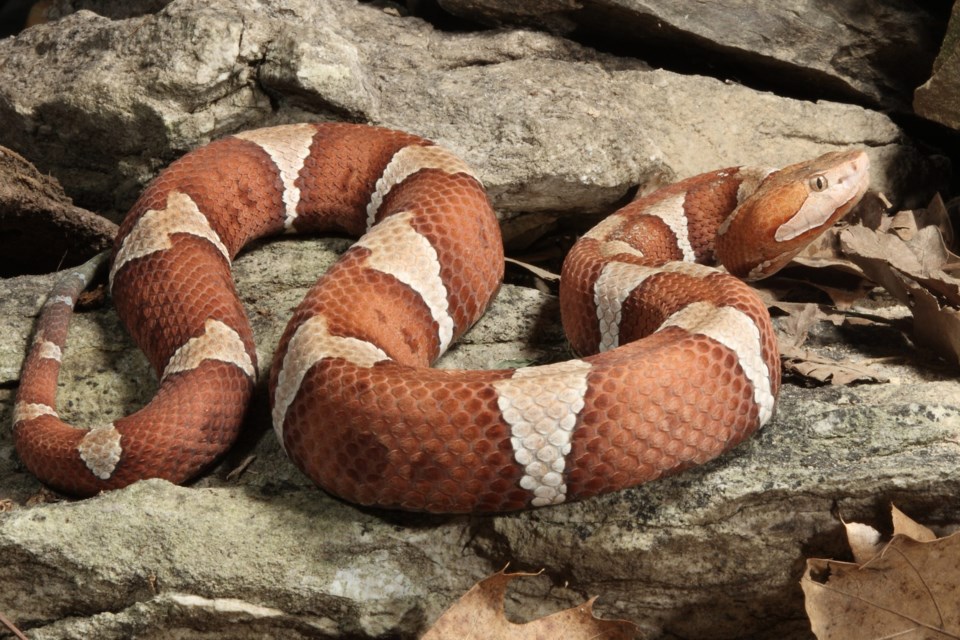My mom was 10 years old when she woke up on an ordinary weekday with excruciating pain in her right leg. She knew something wasn’t right. When my grandma came into her room to make sure she was getting up for school, my mom told her she didn’t feel good.
My grandma, who could smell bullshit from a mile away, told my mom to “stop playing hooky” and get up. She ripped the covers off my mom to reveal her bright red leg with every vein so highlighted that each appeared to be protruding.
She had been bitten by a brown recluse spider that made its way into her bed overnight. Living out in the country of Clarksville, Texas, my mom was too far to make it to a hospital. Instead, she had to go to a local doctor, who said my mom would’ve died if my grandma had waited any longer. But she received treatment, got the day off school and everything turned out fine.
My mom still has a prominent scar on her leg from that less-than-an-inch long brown recluse many years later (you’re welcome, mom, for leaving the exact number of years out).
All this to say that this tiny spider could’ve killed my mom if she hadn’t gone to the doctor and received treatment in time. So, as we all start venturing outdoors on days not bombarded by severe thunderstorms and critters make their way indoors to avoid the Texas heat, it’s essential to keep an eye out for potentially dangerous insects and reptiles.
Here are five critters in Collin County to look out for, how to avoid them and what to do if you encounter them.
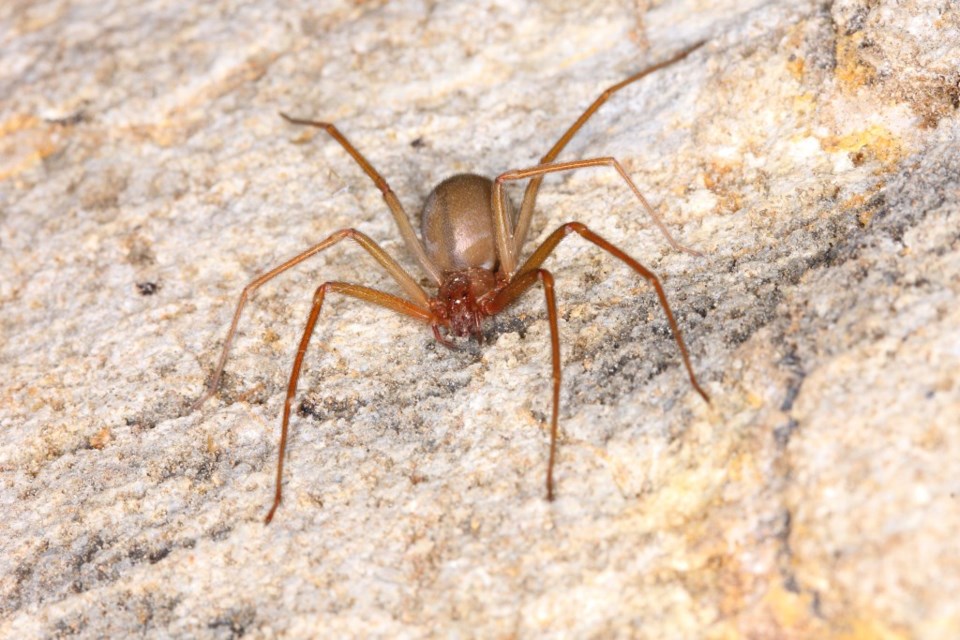
Brown Recluse Spider
Let’s go ahead and begin with the star of my mom’s show — the brown recluse spider. But there is good news about this spider — they are timid and tend to live in places undisturbed by humans, according to the Collin County Guide on dangerous insects.
In your home, you can find them in dry, undisturbed areas like cardboard boxes, shoes, behind pictures, piles of clothes on the floor, closets, garages, attics, crawl spaces, sheds and woodpiles. So make sure to pick up after yourself to avoid giving these spiders a home in your home.
As far as actually being able to spot one, this is not an easy task. The spiders are tiny and resemble other common, non-threatening house spiders. But if you’re able to get a close look at a potential recluse spider in your home, look for a violin-shaped mark on the back closest to their head.
According to Orkin, reactions to a brown recluse bite vary depending on the bite's location and how much venom the spider injected. Ironically, the bites aren’t painful at first, and noticeable symptoms don’t start until a few hours after being bitten. Most people will notice redness, swelling and a blister at the bite location. Scarier symptoms can develop later, like fever, convulsions, itching, nausea, muscle pain and, in rare cases, necrosis — cell death.
Get to the hospital immediately if you are bitten. While death is very unlikely, according to Orkin, you still need to seek treatment as your symptoms will only worsen.
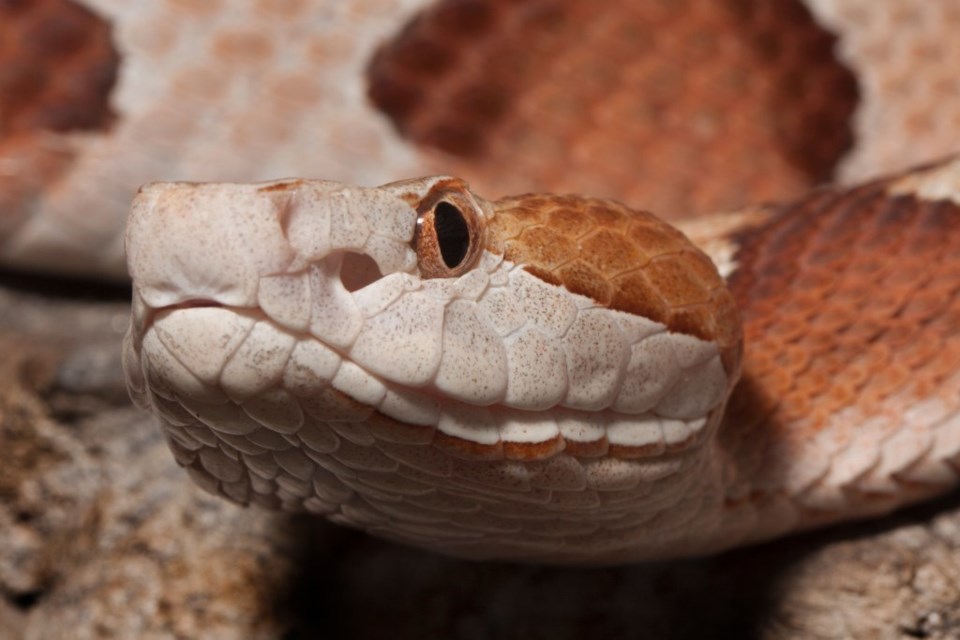
Copperhead Snake
If you’ve lived in Texas for even a short time, you’ve probably heard of the copperhead. According to the University of Georgia’s Herpetology Program, these guys have evolved to be comfortable in suburban areas, which is why many North Texans find them in their yards, especially those whose homes back up to water sources.
You can find copperheads in wood piles, sawdust piles, abandoned farm buildings, junkyards and old construction areas, according to a LiveScience article. They also tend to shelter under boards, sheet metal, logs or large flat rocks. The copperhead tends to be about 2-3 feet long and has distinct hour-glass-shaped marks on its body except for its head, which is (no surprise) a coppery color.
If you happen to run into a copperhead snake, there’s a catch — do NOT try and kill it. While it’s tempting to get the snake out of your life and space for good, most bites from this snake occur when people pick it up or try to kill it, according to the Collin County Guide on venomous snakes. And as horrifying as this is, snake heads can bite even after being killed.
It’s also important to note that copperheads give no warning signs that they’re about to strike. They do so as soon as they feel threatened. And while their venom is somewhat mild and rarely kills a human, a bite from one is often very painful. The venom causes temporary tissue damage to the bite area.
Call 9-1-1 immediately if bitten. And if your pet is bitten, call your vet immediately. If you want the snake out of your yard or home, don’t try and do it yourself. Instead, visit the Facebook group “What kind of snake is this? North Texas Educational Group,” post about the snake and an expert will help you.
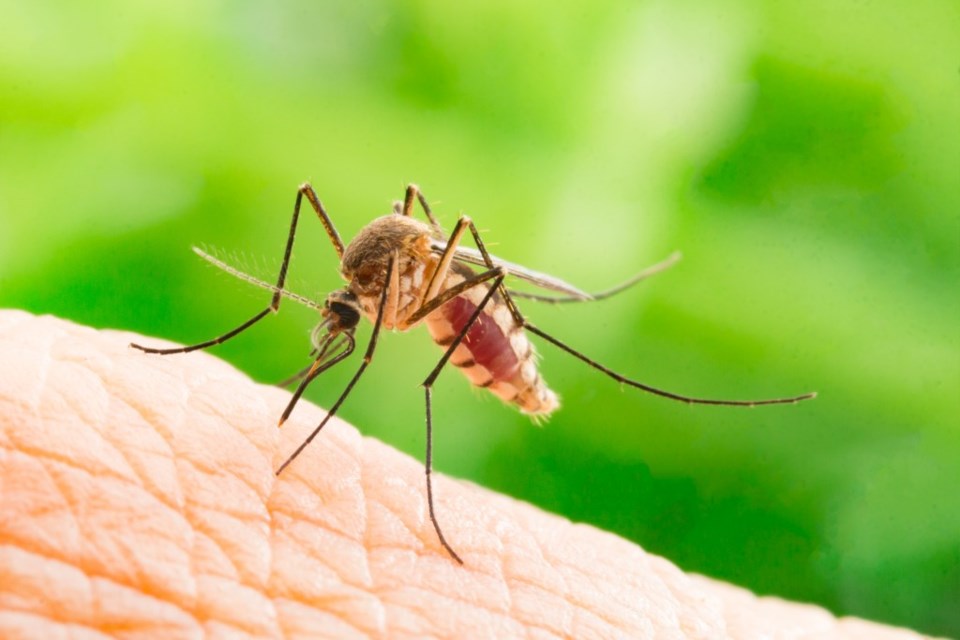
Mosquitoes
While not as sexy as Texas critters like the copperhead or brown recluse, the reality is that mosquitoes carry some of the most dangerous illnesses and are considered by many to be the world’s deadliest animal. So while most Texans have been bit by these suckers more times than they can count, it’s critical to know how to keep yourself safe.
These annoying bloodsuckers are present in copious amounts throughout the late spring and early summer, especially at dawn and dusk, according to the Collin County Guide on mosquitoes. They breed in standing water, which is why it’s crucial to eliminate any standing water sources outside your home.
While outside during mosquito season, wear closed-toed shoes and socks, long pants or shorts and long-sleeved shirts. But, of course, mosquitoes can (and will) bite through clothing. So, you should also spray DEET, picaridin or lemon eucalyptus oil on your clothes and exposed body parts.
The good news is that not all mosquitoes carry West Nile Virus, which is usually considered the most common mosquito-borne illness in the U.S. And even if you do get bitten by one that has it, the chance of becoming severely sick from it is less than 1%. Most people don't even know they have the virus.
Obviously, don’t call your doctor just because you got bitten by a mosquito, especially since they’re busy enough dealing with the pandemic. But if you or a loved one has been bitten by a mosquito and develops symptoms like headache, high fever, neck stiffness, disorientation, coma, tremors, seizures or paralysis, please call a doctor immediately.
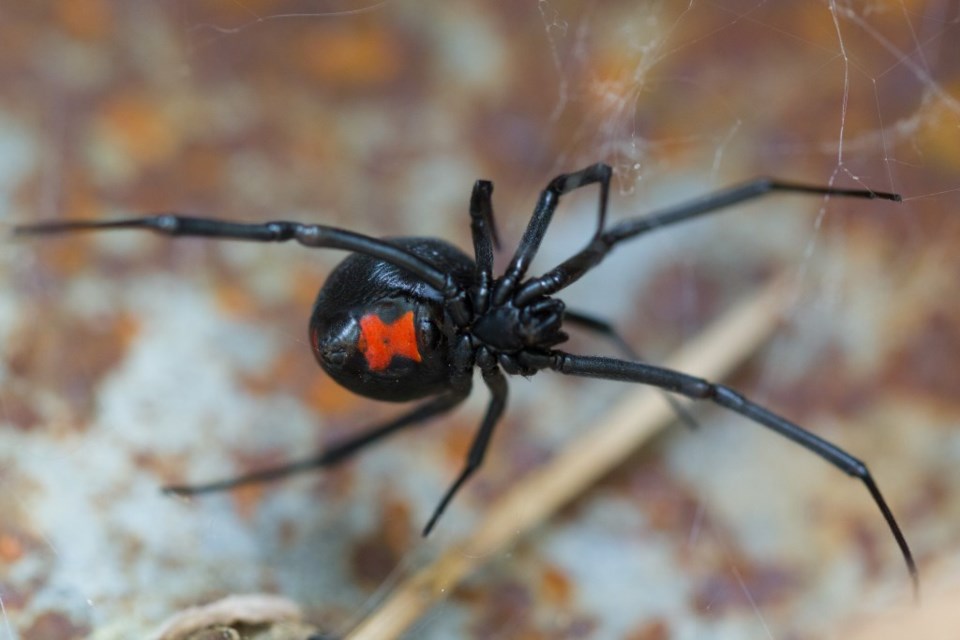
Black Widow Spider
The second of the two most infamous venomous spiders in Texas is the black widow spider. However, just like the brown recluse, black widows are not fans of humans and opt to live in hidden areas, according to the Collin County Guide on dangerous insects. While these spiders are somewhat common, they don’t bite many humans.
You can find black widows in garages, sheds, under trash can handles, undisturbed homes, woodpiles, shrubs, crawl spaces, gutters and utility meters. The black widow female typically is shiny and black. She has a large abdomen and a red hourglass on her underside, making her pretty obvious to spot. But, on the other hand, male black widow spiders look somewhat similar to the brown recluse spider (go figure). And sometimes, female black widow spiders don’t have any markings at all.
Symptoms of a bite consist of an immediate sting when bitten, with moderate to intense pain within a couple of hours, which can last for a few days. Symptoms can also include nausea, vomiting, tremors, stomach pain, extreme sweating, loss of muscle tone, leg cramps and increased blood pressure.
Like all of the dangerous Texas critters on this list, if you run into it, don’t mess with it. And seek medical treatment immediately if you get bitten.
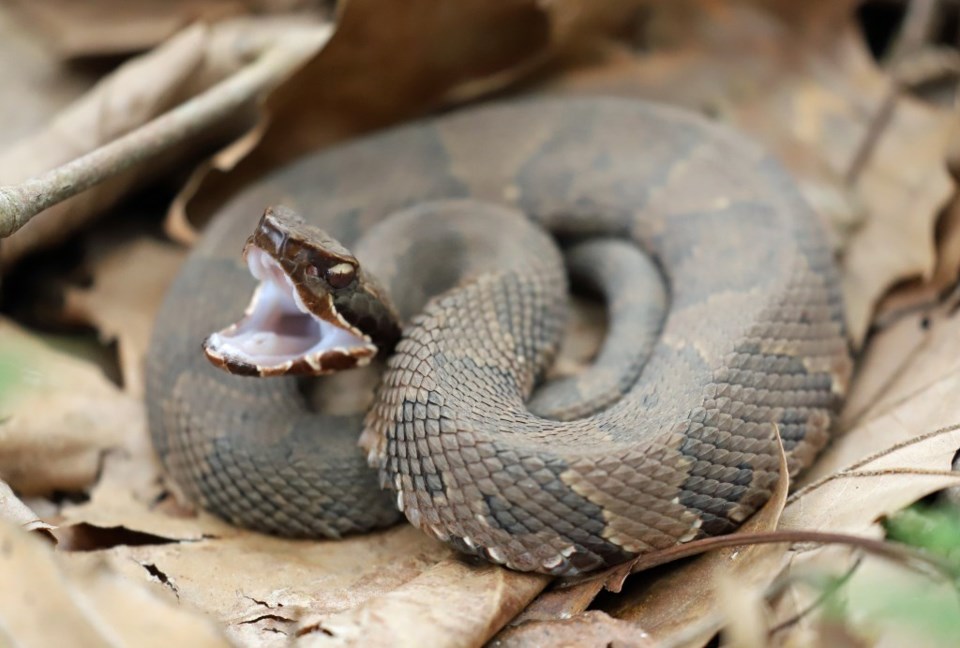
Cottonmouth Snake
Another dangerous critter common to North Texas is the western cottonmouth or water moccasin, according to the University of Texas at Arlington. The good news about this snake is that, unlike the copperhead who has a bit of a temper, these guys not only warn you when about to bite but also will get the hell away from you if possible.
Texans can find cottonmouths in pretty much all aquatic environments, such as marshes, swamps, slow-moving streams, lakes, ponds and rivers. Whenever they are in danger, cottonmouths vibrate their tails and squirt a strong musk smell (gross, I know). Sometimes, they will run or become motionless to try and hide. Sometimes they will open their mouths as a warning. Regardless, if you approach a cottonmouth doing any of these things, it’s basically giving you the middle finger, and you should absolutely stay away.
The snakes are usually about 2-3 feet long with a flat, broad head, upturned snout, cat-like eyes, a thick body and a slim tail. Coloration ranges from dark brown to black with a pale stripe extending from behind the eye to the back of the head.
However, a bite from a cottonmouth is nothing to mess around with. Even though they usually aren’t a serious risk to humans, their bite is "painful and medically significant," according to UTA. One person a year dies from a cottonmouth bite in the U.S. — a testament to the fact that, if you’re bitten, you need to seek medical attention.
This article was originally published on April 27, 2021.

